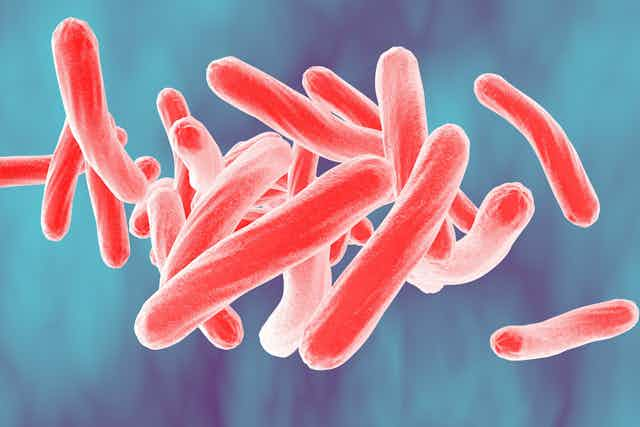One of the things that has formed part of my syllabus with medical students is asking them about the cause of malaria. Before they have studied parasitology, this question elicits interesting, but reasonable, answers: bushy environments, not sleeping under a treated bednet, the rains, mosquitoes and mosquito bites.
In their final year of study, the students are sophisticated medical students. Their answers change. By now they are sure that the parasite Plasmodium species is what triggers the disease.
This answer is correct. Plasmodium species are indeed central to malaria. But what the students have forgotten is that mosquito breeding sites, poverty, and wet and warm environments also contribute to the spread of the disease.
Plasmodia constitute one of many factors that must be present for malaria to occur. To get malaria the parasite needs to be present. But other factors also have an impact on whether or not a person becomes ill.
Many people have the malaria parasite in their bloodstream but do not become ill. For example, if someone contracts malaria as a child they are likely to have developed immunity by adulthood.
But the factors that “tip” people to develop malaria from the parasite include:
a weak immune system: the parasite becomes more aggressive in the body and malaria develops;
age: younger children are likely not to have built up immunity to the disease; and
pregnancy: mothers-to-be have compromised immune systems.
The point of my lesson is that there are different causes of diseases. This is true of all diseases, not just malaria. This has led to a number of models being developed that set out to explain causation and the linkages between different variables.
Understanding what causes diseases is a life-and-death matter. The different models used by medical practitioners are a source of great contention and have generated a great deal of heated debate. If misinterpreted, or too narrowly understood, they can lead to bad decisions being made about how diseases are treated.
Understanding the models
Many doctors, nurses and other health professions are not aware of the philosophical and practical meaning and debates on “cause”.
There are several different models that explain how diseases are caused. Let’s focus on two:
the web of causation; and
Rothman’s sufficient-component cause model.
The web of causation argues that there are many factors that may result in a disease occurring. Each of these on its own may contribute to someone actually becoming ill from the disease. For example, there could be a number of reasons that contribute to someone who has TB and is ill. These include:
overcrowded living conditions;
whether the person has had the Bacille Calmette-Guérin vaccine; and
the person’s state of nutrition.
On the other hand, the sufficient-component cause model proposes that there are several contributing factors that act together to produce a given disease. The argument is that a disease will only occur if a group of factors – or component causes – occur together to cause it. But there must be a necessary cause that is present for the disease to occur.
Let’s go back to the TB example. In terms of the sufficient-component model, overcrowding, the vaccine and the person’s state of nutrition would all be component factors. But these would need to be considered along with the necessary component, being the mycobacteria that causes the disease. Without it, the disease would not occur.
Mbeki was partially right, but …
We can also use the example of former South African president Thabo Mbeki. While in office, Mbeki made the following statement:
Does HIV cause AIDS? Can a virus cause a syndrome? How? It can’t, because a syndrome is a group of diseases resulting from acquired immune deficiency.
His comment caused an uproar, with critics claiming that he was in denial about the link between HIV and AIDS. But his statement, viewed objectively, is not at odds with the sufficient-component model of understanding what causes diseases.
It is known the world over – and among upright scientists – that HIV infection on its own is not enough to cause AIDS. The infection must be there for AIDS to occur. But there are countless HIV-positive people who will not develop AIDS. For some it may take longer to develop but for others it will never happen.
What Mbeki and his then health minister, the late Manto Tshabalala-Msimang, missed is that in all the cases, there is still a need for a necessary cause. The necessary cause is the component cause or factor that must always be present for the disease to occur. But it is not sufficient – by itself – for disease to occur.
In the case of AIDS, HIV is the necessary cause. This means it must be present for AIDS to occur. Without HIV, there can be no AIDS. But since other factors must also be present for one to suffer from AIDS, HIV is not a sufficient cause of AIDS.
This is what Mbeki needed to say to be considered correct by the orthodox scientific community. He needed to recognise that HIV was necessary for AIDS to develop, but was not sufficient in and of itself to cause AIDS.
Among people living with HIV, scientists still do not know who will and will not develop AIDS. This is why it’s important that all HIV-positive people eligible for antiretrovirals receive and adhere to treatment. The antiretrovirals help build their immune systems and also prevent the virus from spreading.
Mbeki may have been unaware of the sufficient-component model. If he was, he would have supported the widespread distribution of antiretrovirals while he argued that there were other component causes, such as nutrition, lack of clean water or people’s unhealthy lifestyles that also needed attention.
That Mbeki has been found guilty in the court of public opinion is known. But leaving the discussion there is not enough. It does not help humanity if we continue to believe – or propagate – that other factors are not needed for HIV infection to mature into AIDS.

